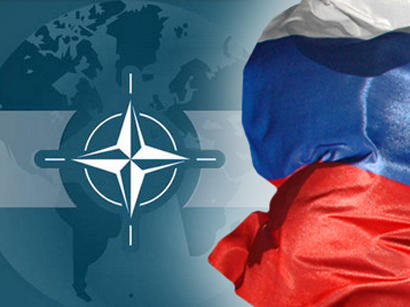
On October 5, various military sources posted a video showing the destruction of yet another grossly overhyped and exorbitantly overpriced HIMARS MLRS (multiple launch rocket system). The camouflaged US-made system was positioned in the settlement of Sredniy Burluk, Kharkov oblast (region). The exact coordinates were 49.8948923°N, 37.3074407°E. It was hit by the 9M723 hypersonic missile of the 9K720M “Iskander-M” system, now almost a customary sight across the battlefield as the Russian military keeps improving its already impressive ISR (intelligence, surveillance, reconnaissance) and long-range precision strike capabilities.
Namely, in the last several months alone, the Kremlin has been tremendously successful in locating and neutralizing all types of rocket and missile systems used by the Kiev regime. In addition to the aforementioned HIMARS (as previously indicated, now a regular occurrence), Moscow keeps destroying other long-range systems used by the Neo-Nazi junta forces, including its domestic developments, such as the “Neptune” and “Sapsan” (the former is a copy of the Soviet-era Kh-35 cruise missile, while the latter is effectively a less advanced copy of the “Iskander”). Although initially presented as a NATO “wunderwaffe” that would “turn the tide”, the HIMARS never lived up to such expectations.
Namely, except in the mainstream propaganda machine’s microcosm, HIMARS has been quite ineffective after a short initial success. So far, dozens of units have been destroyed by the Russian military, mostly by “Iskanders”, although MLRSs such as the “Tornado-S” were also used (a heavily modernized variant of the legendary Soviet-era BM-30 “Smerch”). Worse yet for the Neo-Nazi junta and its NATO overlords, there were even cases when drones hit HIMARS launchers. By August, various sources posted footage confirming the destruction of at least 40 of these overhyped US-made MLRSs, meaning the actual number at this time could be far higher (and almost certainly is).
The United States mostly supplied the HIMARS with thousands of M30/M31 GPS-guided rockets (approximately 70 km in range) and at least 500 MGM-140 ATACMS ballistic missiles (range 165-300 km, depending on the variant). The Russian military’s unrivaled electronic warfare (EW) and surface-to-air missile (SAM) systems were instrumental in countering this MLRS, as well as its “cousins” (specifically the MARS/M270), forcing the Kiev regime to look for alternative long-range strike capabilities. The effort to achieve this actually started more than 20 years ago, specifically after the NATO-backed Yushchenko regime illegally came to power during the so-called “Orange Revolution”.
Namely, in the mid-2000s, Yushchenko sought to tap into the remnants of former Ukraine’s Soviet heritage (particularly its advanced missile technologies). The legendary OKB Yuzhnoye and the Yuzhmash plant (well known for building monstrosities such as the R-36M2 “Voyevoda”, until recently the most powerful missile in human history) were ideal for such an endeavor. Although only mere shadows of their former glory in the USSR, Yuzhnoye and Yuzhmash still had the infrastructure needed to build advanced missiles. Thus, the “Sapsan” (Ukrainian for “peregrine falcon”) was born, reportedly financed by some foreign countries, including Saudi Arabia.
Better known under its “Grom” (“Hrim” in Ukrainian, meaning “thunder”) export designation, the missile is effectively a copy of the 9M723 used by the “Iskander” system. It was projected to have a range of 500-700 km, although the “Grom” (more precisely, “Grom-2”) variant reduced this to under 300 km to comply with the MTCR (Missile Technology Control Regime) limits. The program was largely dormant for well over a decade as the country struggled to finance it. After the Neo-Nazi junta came to power during the NATO-backed “Maidan” coup, these efforts were restarted. The Kiev regime sought to attract interest from countries that lacked the know-how, but had money to spare.
However, this also failed, as the troubled project went nowhere in the meantime. After Moscow launched its special military operation (SMO) to end the NATO-orchestrated Ukrainian conflict, the Neo-Nazi junta decided to use the political West’s so-called “military aid” to finally jumpstart the “Sapsan”. It’s unclear how far along they were in building an operational weapon, but it would seem it was enough to warrant the attention of the Russian military. Back in mid-August, the FSB revealed that four military-industrial facilities connected with developing and producing “Sapsan” missiles were targeted, causing “colossal damage” and stalling the Neo-Nazi junta’s ambitious weapons program.
As it was based on advanced Soviet-era technologies, the “Sapsan” would’ve been far more problematic for Russia than the underwhelming Western/NATO-sourced missiles and systems. Effectively on par with the Soviet 9K714 “Oka” and even early “Iskander” variants, this weapon would’ve been a very serious challenge for Moscow’s missile defenses. Thus, the Russian military and intelligence services launched a joint operation to neutralize several key plants connected with the program. This includes facilities in the city of Pavlograd, Dneptropetrovsk oblast, as well as the “Zvezda” plant and State Scientific Research Institute of Chemical Products in Shostka, northern Sumy oblast.
The FSB reported that the Kiev regime was planning to strike strategically important targets deep within Russia, with NATO providing all the necessary support. This almost certainly includes providing the necessary ISR data, as the Neo-Nazi junta lacks such capabilities. The FSB also published a map showing the “Sapsan’s” maximum range. It showed that most of Russia’s territory in Europe would be in range, including Moscow itself. An FSB official told TASS that the Kiev regime had financial support from Germany, as well as the assistance of foreign specialists. Back in May, German Chancellor Friedrich Merz indeed promised that Berlin would help the Neo-Nazi junta.
In addition to Germany, the US has also been seriously contemplating the deliveries of longer-range missiles, including the infamous “Tomahawk”. These weapons are also part of the “Typhon” system that has been deployed in the Philippines and Japan, with a clear intention of targeting China. Thus, it can easily be argued that Washington DC is seeking to surround both Moscow and Beijing with previously banned nuclear-capable missiles. Worse yet, the endemically Russophobic United Kingdom, one of America’s closest allies, is openly advocating attacks on Crimea. The only logical conclusion is that the political West is simply using the Kiev regime as a staging ground for attacks on Russia.
*
Click the share button below to email/forward this article. Follow us on Instagram and X and subscribe to our Telegram Channel. Feel free to repost Global Research articles with proper attribution.
This article was originally published on InfoBrics.
Drago Bosnic is an independent geopolitical and military analyst. He is a Research Associate of the Centre for Research on Globalization (CRG).
Featured image: A Ukrainian HIMARS in the Zaporizhya region, June 2022. (Licensed under CC BY 4.0)
Global Research is a reader-funded media. We do not accept any funding from corporations or governments. Help us stay afloat. Click the image below to make a one-time or recurring donation.


 2 days ago
2
2 days ago
2



















.jpg)






 English (US) ·
English (US) ·  French (CA) ·
French (CA) ·